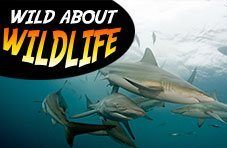The oceans surrounding South Africa are home to one of the most evolved alpha predators in the world: the shark. These formidable creatures have been around for a long, long time, dating back as far as dinosaurs and perhaps even further. Out of about 400 species populating our planet today, 100 can be found in the waters of South Africa. Sharks are capable of covering incredible distances, when moving both downwards (the deepest recorded occurrence being 3,000 m) and horizontally (a Great White once trekked as far as 32,000 km).
While we generally tend to consider them extremely dangerous, how much do we really know about this impressive species?
Diverse Shark Family
Great white sharks are the largest predatory shark and can live as long as 70 years. They can grow to a length of up to 6 meters long, and move with an impressive speed of up to 56 km/h. Great Whites demonstrate an incredible use of all their senses and can literally smell even a single drop of blood within 100 L of water. Tiny pores around their snouts and eyes contain a gel which is sensitive to electrical and magnetic fields, enabling the Great Whites to detect the movements of living animals. When it comes to their favorite food, humans don’t rank high at all. Great Whites would much prefer going after a Cape Fur Seal, any day of the week. You will not find these formidable creatures living in captivity, as they simply refuse to live anywhere but the open water.
Ragged-tooth sharks have teeth that are arranged in rows and are constantly moving slowly forward forward. This enables them to always operate with a full sharp set, in the course of their lives, they will replace thousands of them. Seeing females being badly bitten after a mating exercise might make you think we’re talking about violent creatures. The fact is that guys have to hang onto the ladies during copulation, and they have no other means of doing so except their mouths. Affectionately called “raggies”, these sharks can grow to about 3m in length and live for 30 years.
Tiger sharks got their name thanks to distinctive dark vertical stripes which tend to fade with age. When it comes to food, they will eat just about anything; ranging from fish to small sharks and other marine mammals. Their stomach content has also previously revealed birds, plastic bags and tin cans. Tiger Sharks will generally shy away from divers rather than approach them, unless tempted with bait.
Zambezi /Bull sharks can be found in fresh water as well as seawater, and it’s their changeable body chemistry allowing them to adapt. They feed mostly on fish, but will also devour an occasional turtle, small sharks, dolphins and crabs. Zambezi sharks can be frequently seen along the Protea Banks in Kwazulu Natal. While not considered dangerous to divers, they might decide to approach simply out of curiosity.
Whale sharks are the largest living fish in the world. Easily recognizable by distinctive white spots which cover its entire body, they can reach lengths of 13 m and weigh as much as 13 tons. Their square, wide mouths contain 3,000 teeth in each jaw. Kind of intimidating, right? Whale sharks don't hunt at all, instead, they swim around with open mouths and collect plankton, squid and small fish from the water.
Sevengill/ Cow sharks have seven gills instead of the usual five, hence the name. Occasionally, these sharks will go hunting in packs to take down larger prey, but can also go for weeks without feeding. They’re social animals and are commonly found in groups of 20 or more. Their curiosity makes for a superb diving experience and they’ll confidently move closer to take a look at the divers.
Feeding and Reproduction
Sharks’ feeding habits depend on their shape and size. Small ones tend to hang around the bottom of the ocean catching waste which falls from above, while larger sharks hunt for fish, whales and seals close to the surface.
Many sharks reproduce by producing eggs which hatch within mum’s body. Within some species, pups can be pretty ruthless and eat their siblings before they are born. How's that for survival of the fittest?! It’s not a sign of aggression, though, rather means to stay alive. Other sharks lay egg cases, known as "mermaid's purses", which contain the embryo and yolk supply to feed on.
Are All Sharks Dangerous to Humans?
While we’ve been spooked by many stories and films featuring savage shark attacks on human life (remember Jaws?), the fact is that only several species will go after people, unprovoked. Sadly, we tend to present a bigger threat to them than they do to us. It’s been estimated that humans kill more than 100 million sharks each year, what a sad statistic that is.




